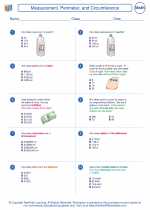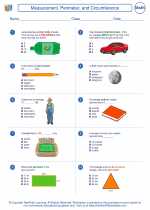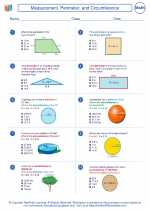Rectangular Prism
A rectangular prism is a three-dimensional shape with six rectangular faces. It is also known as a rectangular solid or a rectangular box. The faces of a rectangular prism are all rectangles, and opposite faces are congruent and parallel.
Properties of Rectangular Prism
1. Faces: A rectangular prism has 6 faces, all of which are rectangles.
2. Edges: It has 12 edges, where each edge is the meeting of two faces.
3. Vertices: A rectangular prism has 8 vertices, where three edges meet.
4. Diagonals: The rectangular prism has 4 space diagonals, connecting opposite vertices.
5. Volume: The volume of a rectangular prism is calculated using the formula: V = l * w * h, where l is the length, w is the width, and h is the height of the prism.
6. Surface Area: The total surface area of a rectangular prism is given by the formula: 2lw + 2lh + 2wh, where l, w, and h are the length, width, and height of the prism, respectively.
Example Problems
1. Calculate the volume of a rectangular prism with length 5 cm, width 3 cm, and height 4 cm.
Volume (V) = l * w * h = 5 * 3 * 4 = 60 cubic cm
2. Find the surface area of a rectangular prism with length 6 m, width 4 m, and height 2 m.
Surface Area = 2lw + 2lh + 2wh = 2(6*4) + 2(6*2) + 2(4*2) = 88 square meters
Study Guide
When studying rectangular prisms, make sure to focus on the following key points:
- Understanding the properties of a rectangular prism, including its faces, edges, and vertices.
- Mastering the formulas for calculating the volume and surface area of a rectangular prism.
- Practicing solving problems involving rectangular prisms, such as finding the volume, surface area, or dimensions.
Remember to visualize the rectangular prism in different orientations to better understand its properties and relationships between its dimensions.
Good luck with your studies!
.◂Math Worksheets and Study Guides Seventh Grade. Measurement, Perimeter, and Circumference

 Worksheet/Answer key
Worksheet/Answer key
 Worksheet/Answer key
Worksheet/Answer key
 Worksheet/Answer key
Worksheet/Answer key
